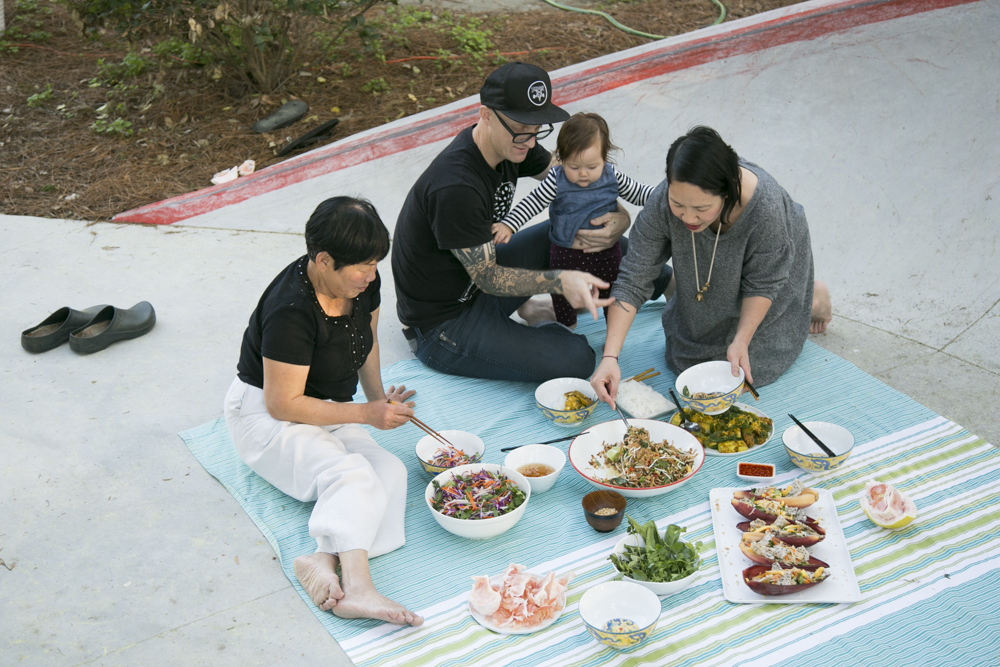Jackfruit, Sprouts, Fresh Herbs, Rice Cracker and Peanuts
Hồng-Ân Trương’s Vegan Jackfruit Salad
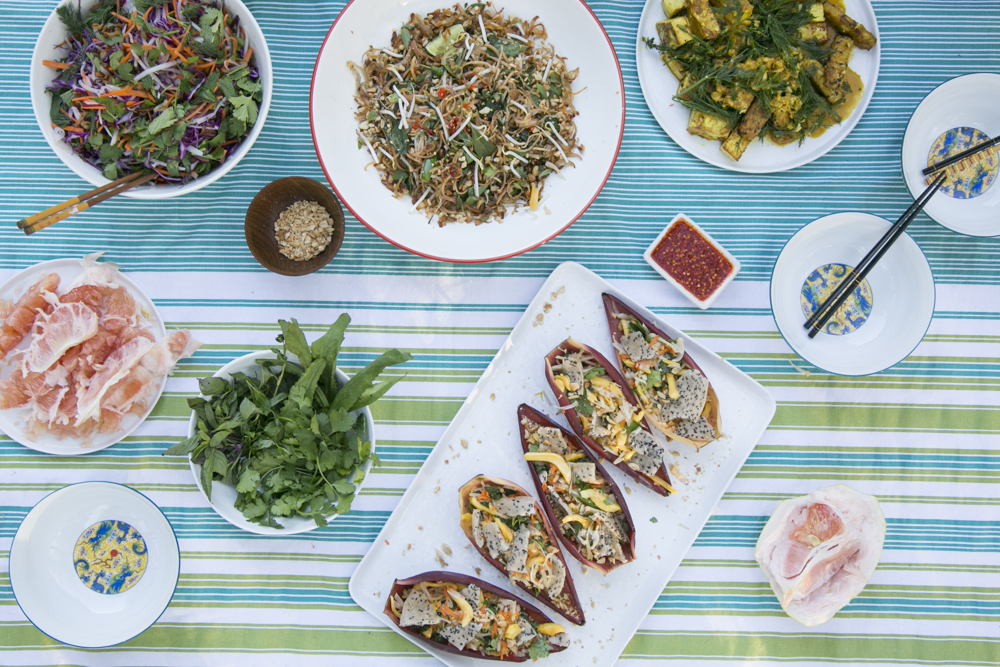
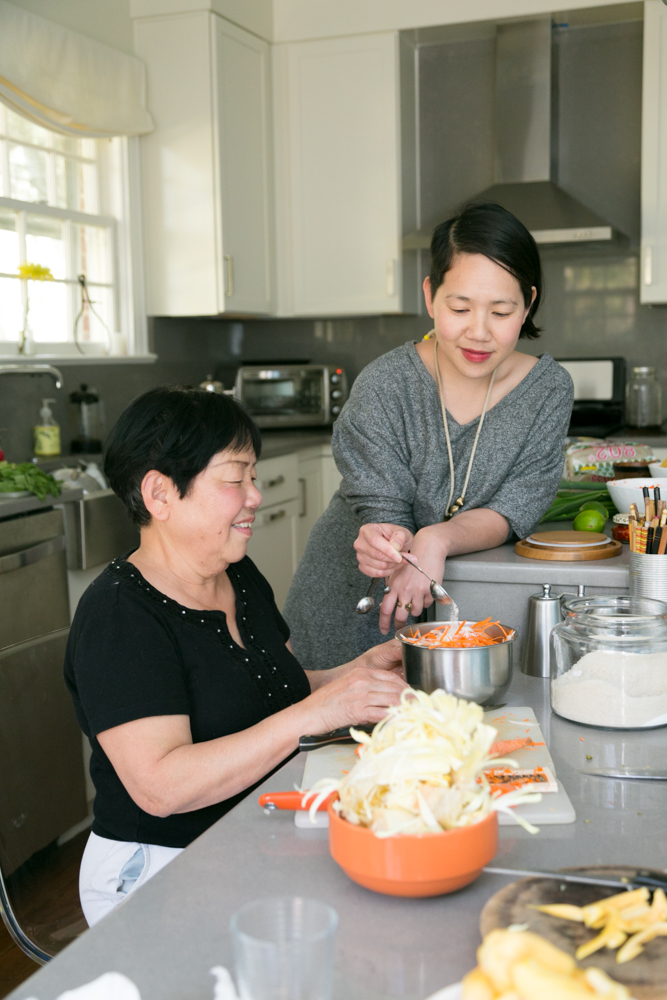
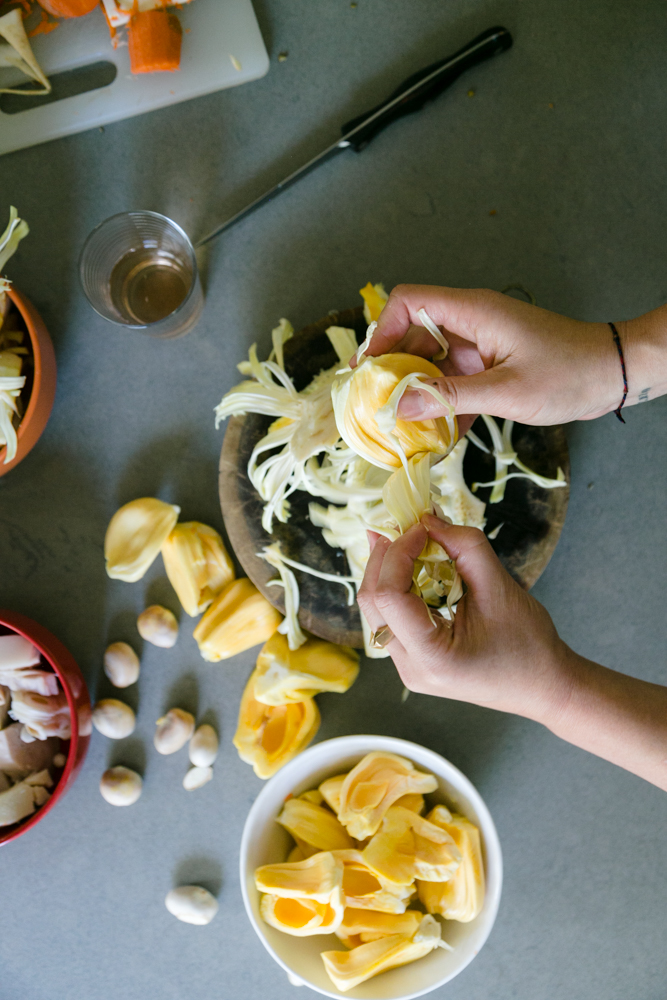
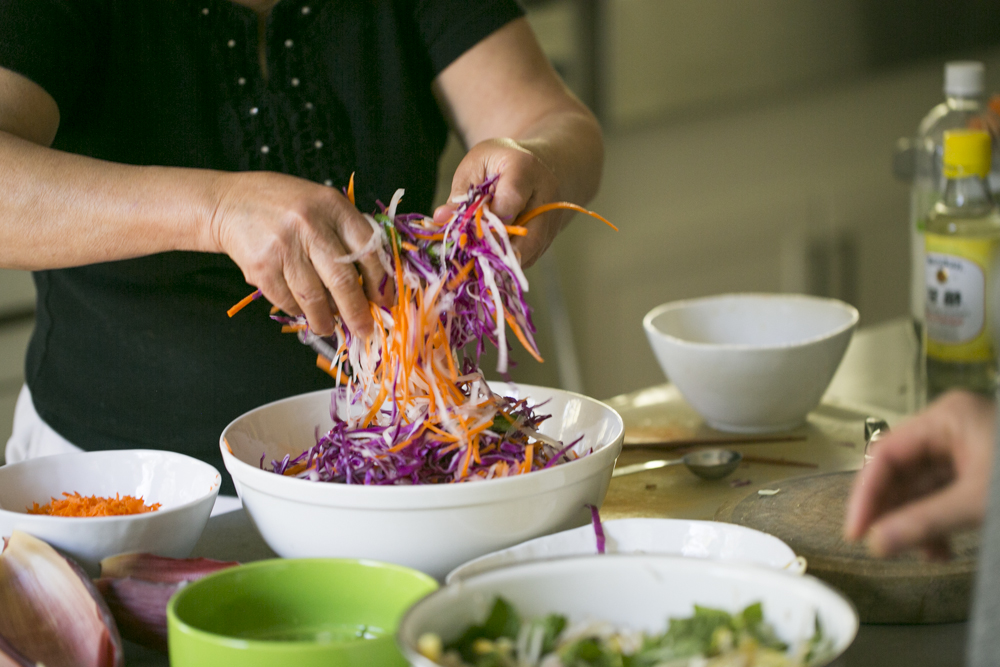
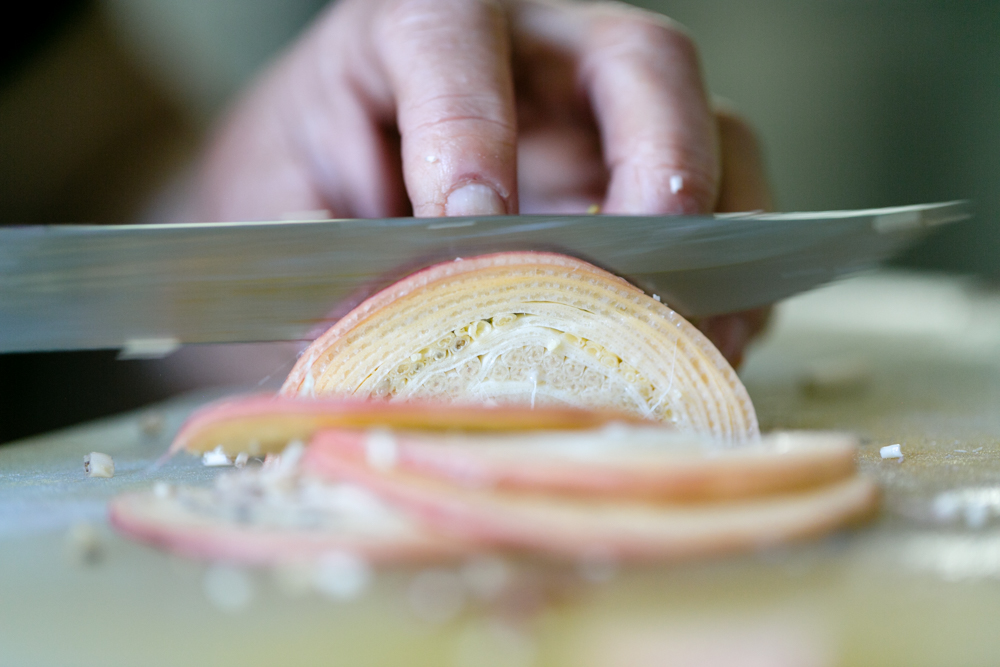
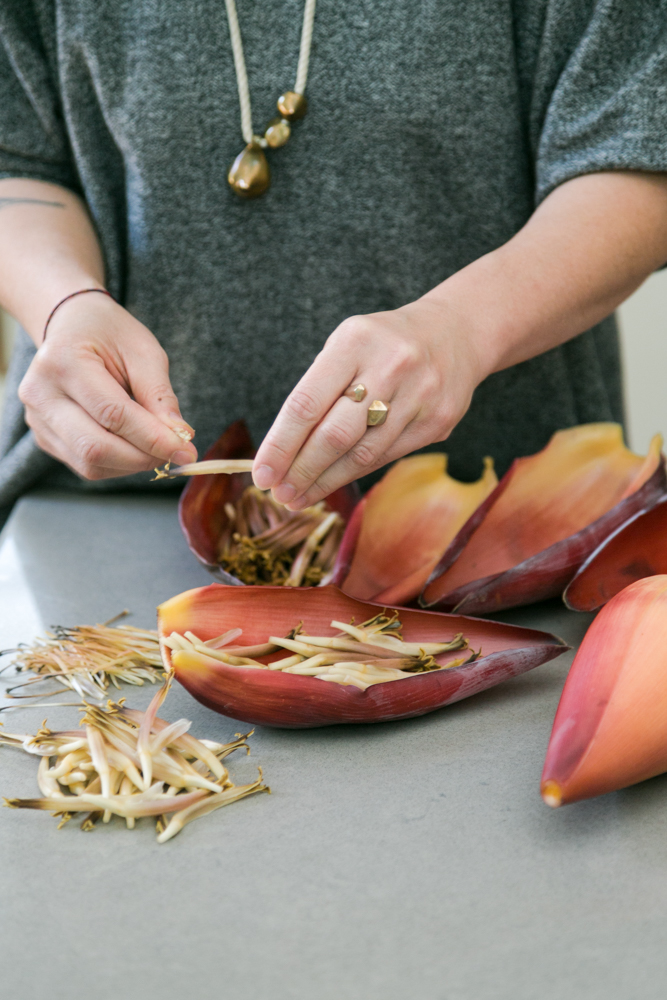
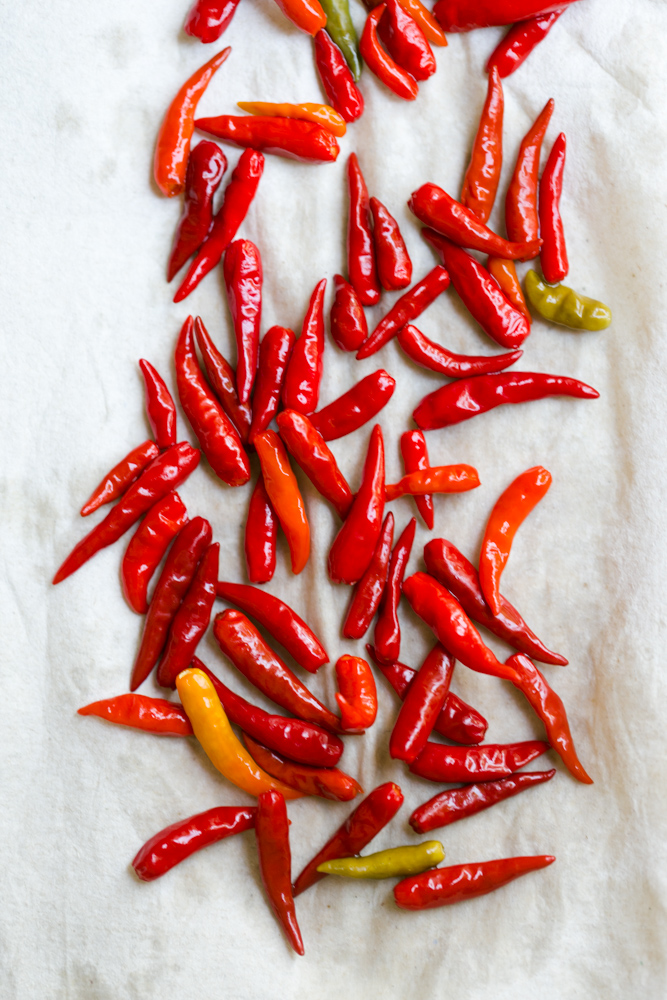
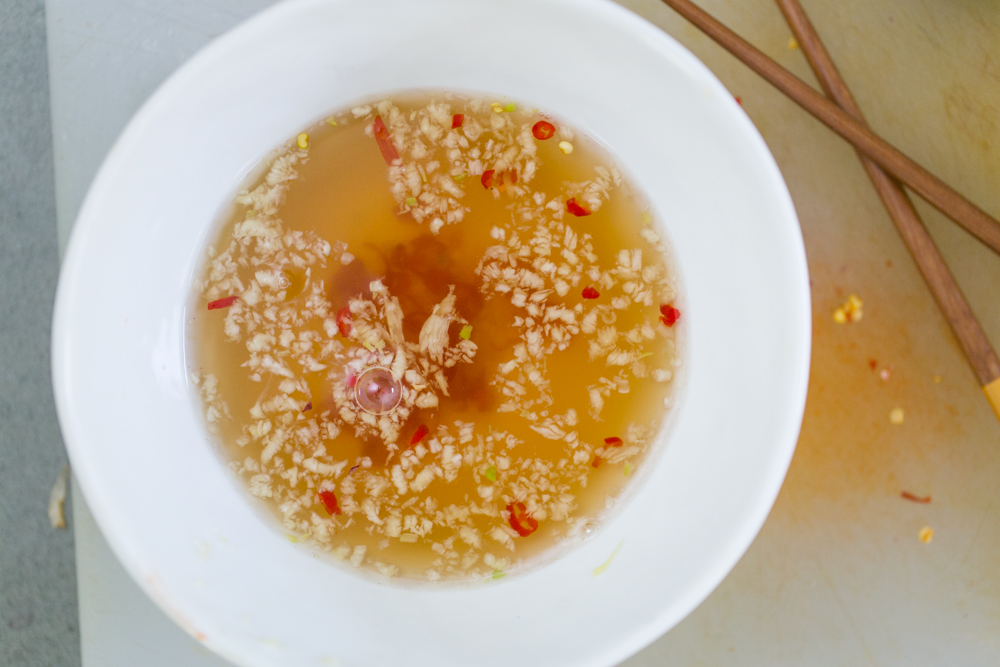
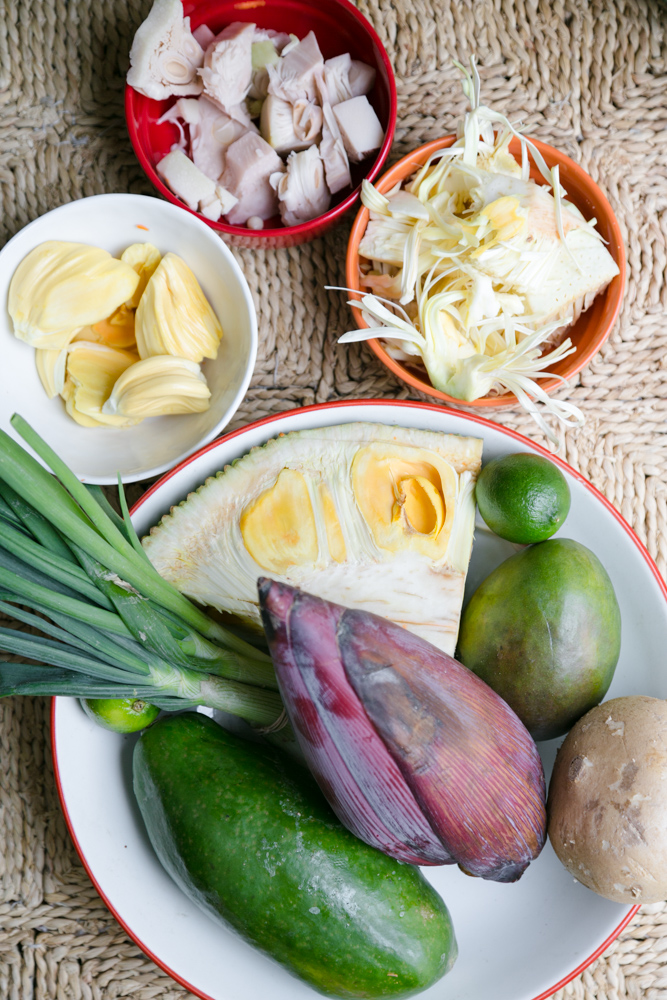
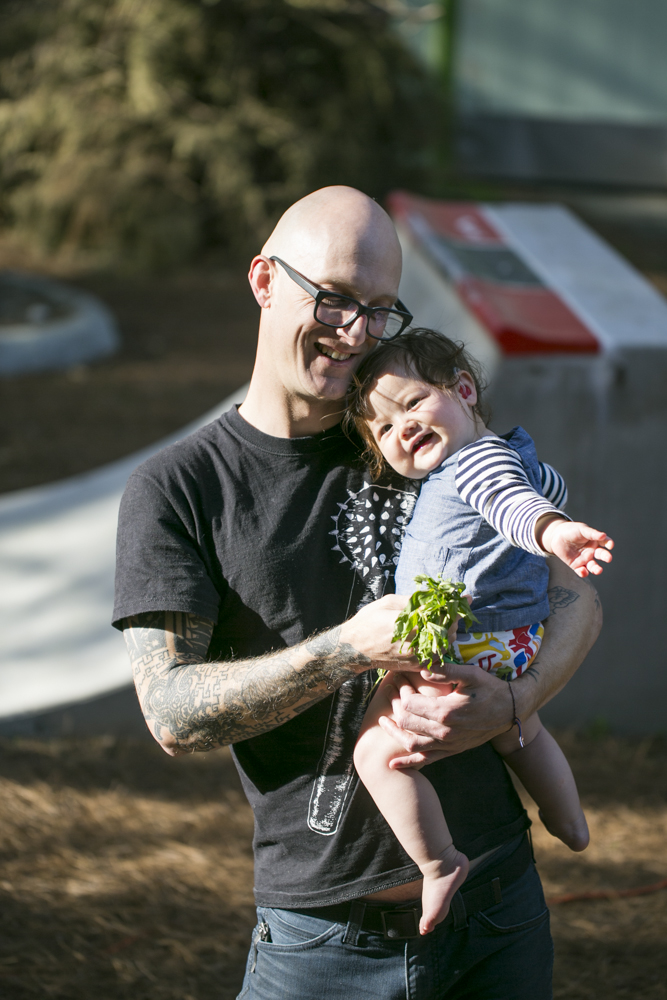
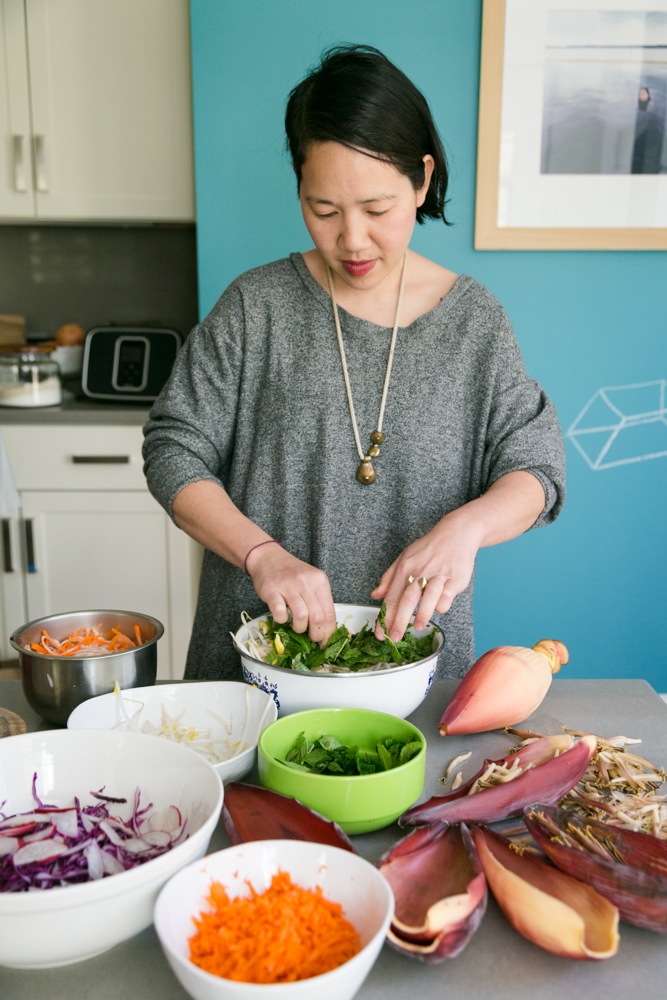
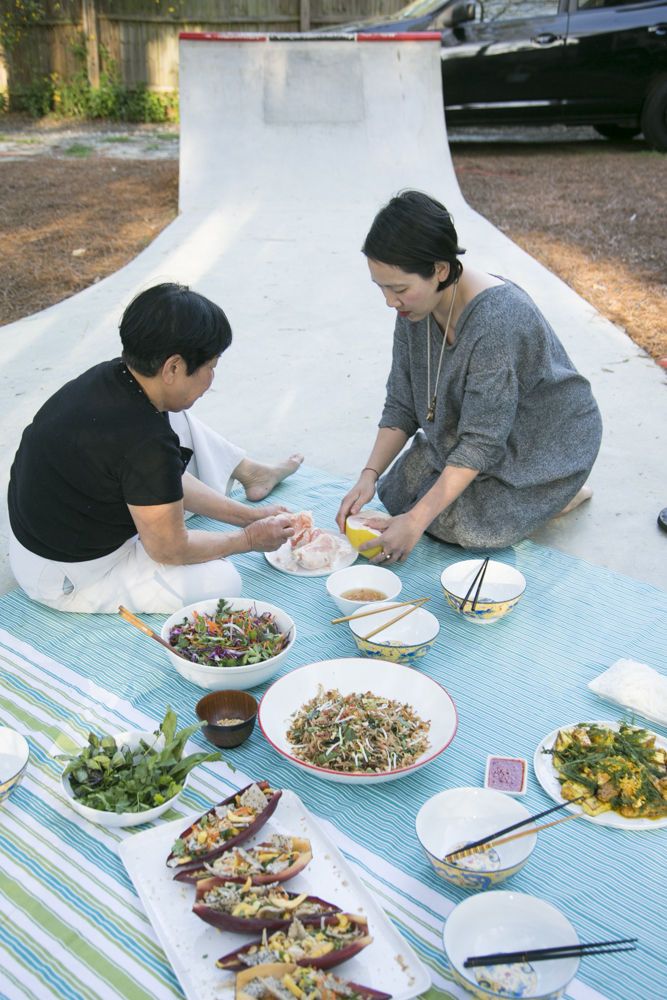

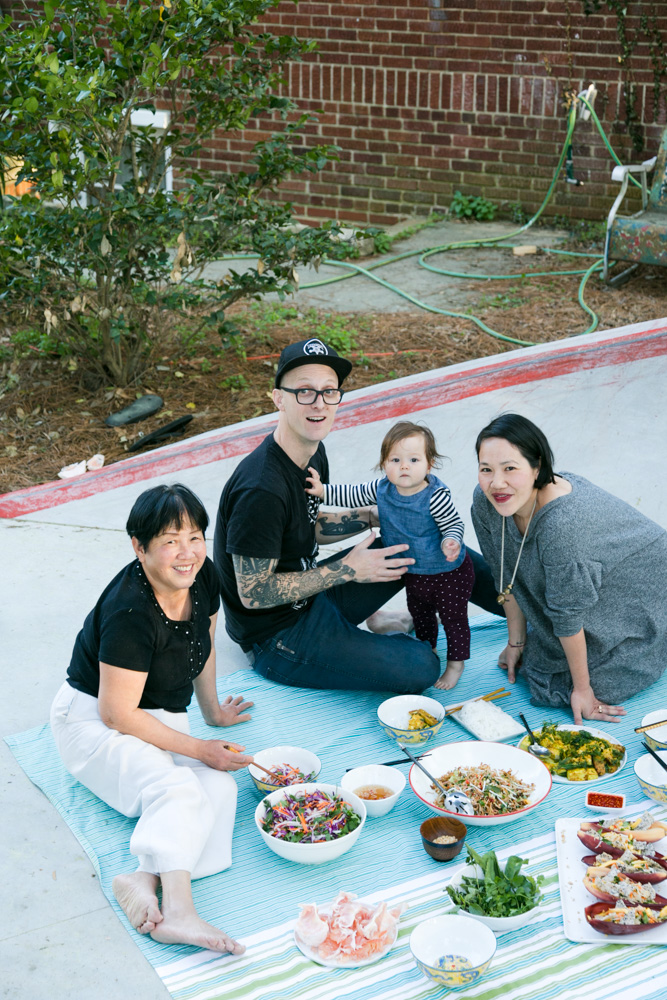
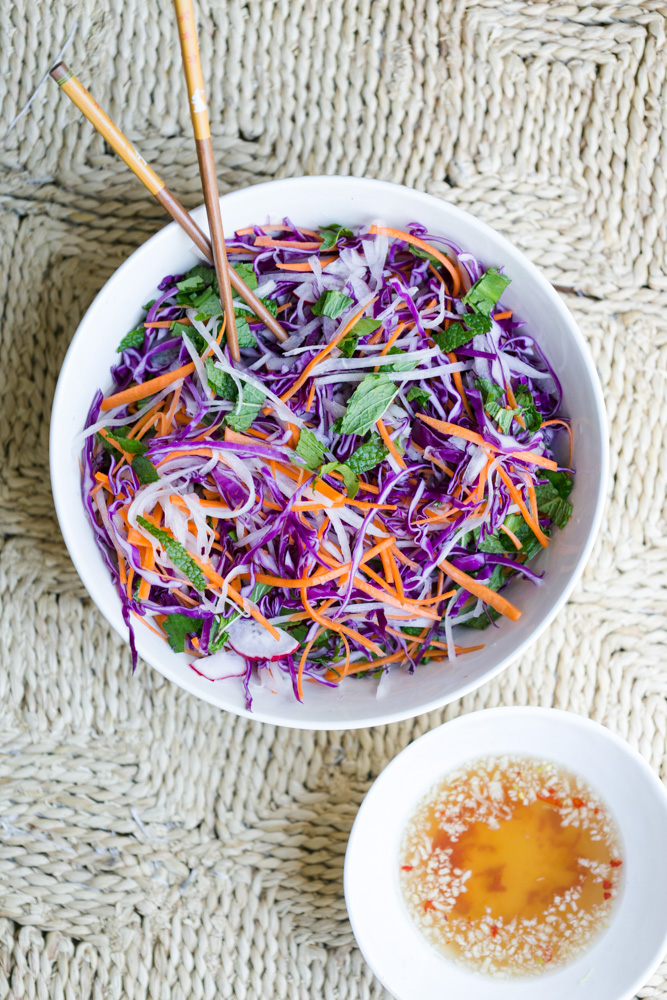
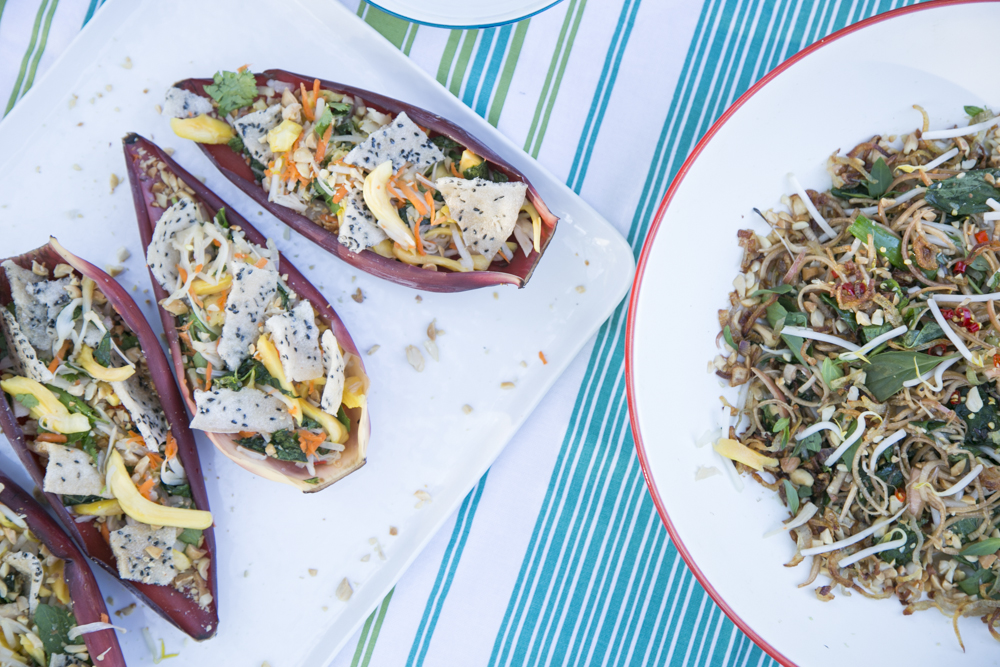
POSTED UNDER
- Durham,
- North Carolina,
- Year-Round
NOTES
Jackfruit is an incredible addition to salad, but also often used as a meat substitute since it has a chewy, substantial texture. Look for it at the Asian grocer; you can’t miss it (it looks like a pre-historic tropical fruit/dinosaur hybrid). Nước chấm is basic Vietnamese dipping sauce or dressing, and should be a mix of salty and sweet. It has no oil and can be used liberally for salads, but also as a dipping sauce for fried spring rolls or poured over rice noodles. Rau răm is a beautiful aromatic herb worth growing yourself or buying at the Vietnamese market. It is one of my favorites, and used anywhere fresh herbs are found in Vietnamese cuisine. If you can’t find it, mint and cilantro will do, or add Thai basil for more punch. Bánh tráng mè are light, crispy rice crackers shaped like massive saucers. They are perfect edible spoons for this salad because they soak up the flavors of the dressing and herbs.
RECIPE
DIFFICULTY
MODERATE
SERVES
4
PREP TIME
15 MINS
For The Salad
-
4-5mediumshallots, diced
-
4tbsvegetable oil
-
6cupsjackfruit, canned, fresh or combo
-
2mediumcarrots, shredded
-
1.5cupssoy bean sprouts, rinsed + dried
-
1.5cupsrau răm (Vietnamese Cilantro), roughly chopped
-
1/4cupcilantro, leaves and stems chopped
-
1/4cupfresh mint, roughly chopped
-
1tbssesame oil
Nước chấm chay (vegetarian fish sauce dressing)
-
3clovesgarlic, minced
-
1/2cupminced fresh pineapple
-
3/4cupwater
-
3tbscane sugar
-
4tbssoy sauce
-
1largelime, juiced, plus more to taste
-
1/2smallThai bird chile, deseeded + minced
For Serving
-
1/2cupcrushed toasted peanuts
-
Bánh tráng mè (black sesame rice crackers)
-
lime wedges
-
Thai chiles
POSTED UNDER
- Durham,
- North Carolina,
- Year-Round
Hồng-Ân Trương is a multimedia artist, an activist and the only friend I know who managed to have HGTV build a skate ramp in their backyard (her family was the unlikely subjects of an episode of Love It Or List It). Hồng-Ân is a thoughtful, politically engaged artist and professor, and her ethical thinking extends from her studio to her diet: She is vegan, and like most vegans, constantly preoccupied with her next animal-free meal (you never know when the options might run-out). She is one of my favorite people to cook with, especially when it comes to the food she knows best: Vietnamese. When I was in Durham, we roped her mother, Hongly Trương, into the salad making experience, and they deftly cooked-up a vegan rendition of one of my absolute favorite dishes – jackfruit salad.
Hồng-Ân Trương In Her Own Words
Julia Sherman: You moved from Brooklyn to Durham. What does that town provide that NYC could not?
Hồng-Ân Trương: Affordable housing! That’s the most important thing! But I have a long history with Durham. It was my first experience of the American south, and the first city I called home after undergrad. Back then, I worked at the Center for Documentary Studies running community-based programs, and through my work as an activist, I got to know the history of the city and all its complexities in terms of race and class. I organized middle and high school students to protest against the war in Iraq; I love Durham for its resilient, dynamic, complicated, and close-knit activist community, especially amongst people of color. There is also a vibrant and burgeoning art scene, but without any of the stress or chaos of living in NYC.
JS: When it comes to your artwork, what are your main concerns and preoccupations?
HAT: I grew up as a refugee kid – my family fled Vietnam in 1975. As a result, most of my videos, photography, and sometimes sound art relates to my relationship to war and death. I’m concerned with how historical knowledge is produced, and how that knowledge impacts how we see ourselves in the world.
JS: I really loved your piece, To Speak A Language. It did an amazing job of weaving together the then and now of Hanoi. What do you want people to understand about Vietnam now?
HAT: I have never lived in Vietnam for more than a few months, so my viewpoint is very specific to the diasporic experience. Vietnam’s history cannot be extracted from its history of violent colonialism, so this makes its mark on everything. Contemporary Vietnam is an interesting, vibrant, and complicated place that cannot be reduced to its war with America, nor its highly fashionable food (I am tempted to say something snarky about that Bon Appétit video of a white dude teaching viewers how to eat their phở). My concerns are really about understanding history beyond the exotic stereotypes we have in the U.S.
JS: As a video art professor at UNC, what do you try and impart to students, given that most of them are not planning to become “professional” artists? Why is it important they learn to think like an artist, even if they may never make art objects again?
HAT: I teach mostly video to undergrads, so it’s kind of a no-brainer: I am teaching visual literacy, hopefully the ability to critique the world around them and challenge normalized social conventions. Don’t tell the president of my university this, but I’m secretly teaching them how to be activists. Haha.
JS: You guys were on the home decorating show, Love it or List It. I still get emails/screenshots from friends when they see the two of you on tv. Was it odd to participate in a sector of pop culture that you really don’t consume? What have been the lasting effects, besides the fact that your house rules?
HAT: When we first learned about the opportunity, I was like, ‘there is no way I’m going on a reality tv show!’ But then we learned more about the show: They are truly interested in giving your house an amazing renovation, and as far as reality television goes, it is a pretty innocuous and fun show. Once we said yes, we found out that so many people we know are closet HGTV watchers! We had a blast creating these subtle caricatures of ourselves. I can likely say that I am more famous for being on that show than for my work as an artist. LOL. But honestly we get stopped by strangers so much, especially at airports for some reason.
